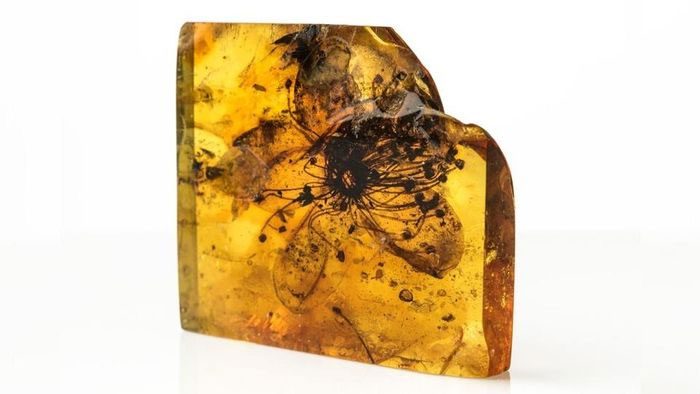This is the largest fossilized flower ever known. It could help archaeologists uncover more about life forms from nearly 40 million years ago.
Scientists have made new discoveries about the fossilized flower preserved in amber for nearly 40 million years, CNN reported on January 12.

Scientists have made new findings about the fossilized flower, first recorded in 1872. (Photo: Carola Radke).
According to Eva-Maria Sadowski, a postdoctoral researcher at the Museum für Naturkunde, the natural history museum in Berlin, the fossilized flower had been forgotten in the collection of the Federal Institute for Geosciences and Natural Resources in Berlin (BGR).
Sadowski stated that she learned about the fossilized flower, officially known as specimen X4088, from a retired colleague.
“He told me that he had visited BGR and seen the largest, most magnificent amber flower in their collection… So, I asked the curator of the BGR collection if I could come and see their collection, and there I found specimen X4088,” Sadowski said.
With a diameter of 28 mm, this is the largest fossilized flower in amber ever known. It is three times the size of similar fossils.
Sadowski extracted and examined pollen from the amber. She discovered that the flower had been misidentified when it was first studied.
“The original genus name of this specimen was Stewartia in the family Theaceae. But we can point out in our study that this is incorrect, primarily based on the morphology of the pollen,” she explained. “When the specimen was first studied in the 19th century, they (had) not detected or studied the pollen.”
According to the new findings, this flower is closely related to a genus of flowering plants commonly found in Asia today, known as Symplocos.
Previously, in 1872, scientists classified it as Stewartia kowalewskii, an extinct evergreen flowering plant.
The authors of the study later proposed a new name for the flower as Symplocos kowalewskii.
The ancient flowers are not well described in the fossil record. They bloom and transform into fruit, so there are very few specimens preserved to this day.
Earlier, in late October 2022, Cambodia’s Environment Minister Say Samal announced that Cambodian archaeologists had excavated a dinosaur fossil for the first time on Koh Por island, in Koh Kong province, Khmer Times reported.


















































